Raymarine Launches Performance Sailing Solution
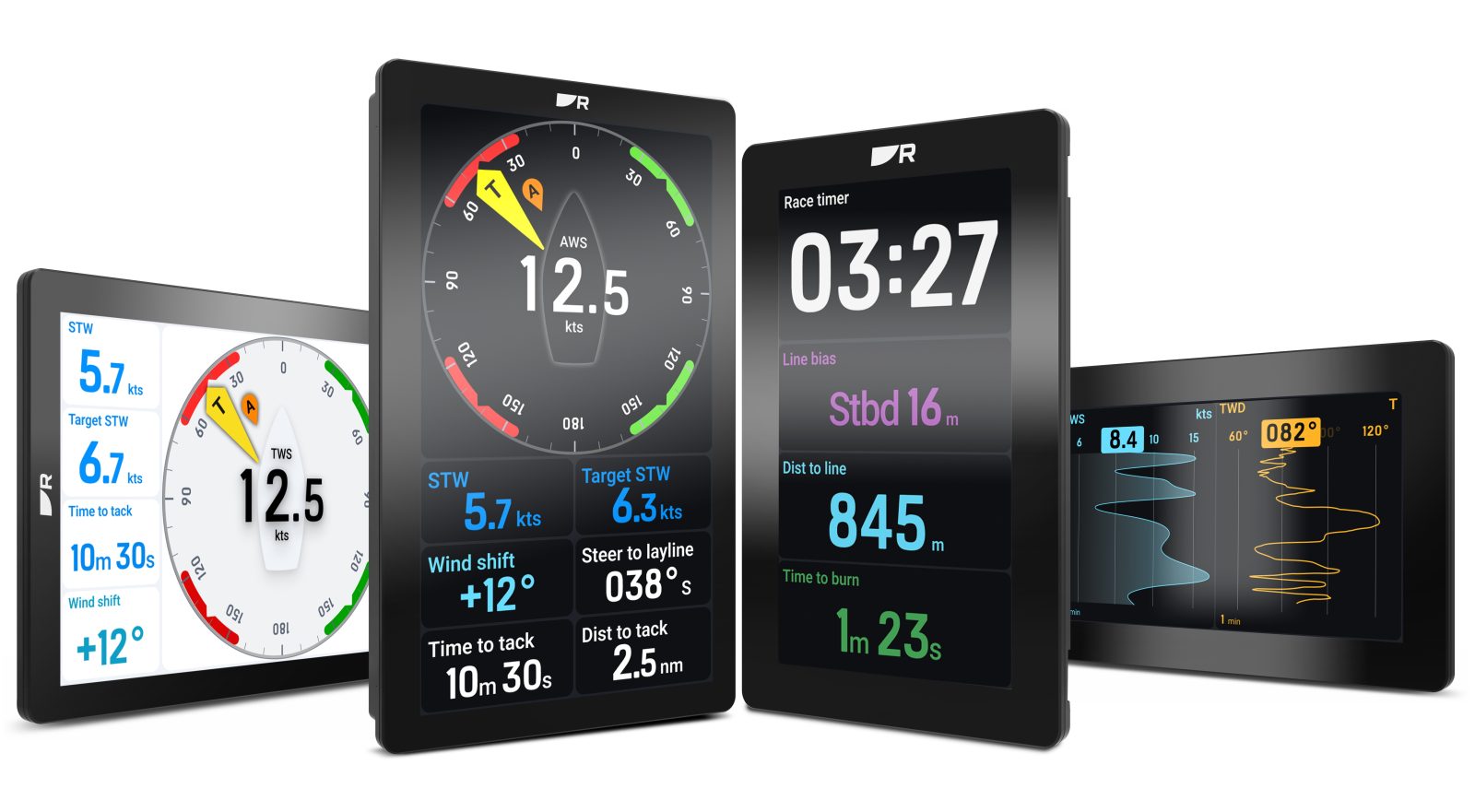
New Alpha Series Performance Displays and Smart Wind Technology Bring Expert Level Decision Support to Leisure Sailors and Club Racers
Hudson, NH: Today, Raymarine is making a bold addition to the performance sailing market with the launch of the Alpha Series display, new Smart Wind Technology, and performance sailing upgrades to the LightHouse operating system for Axiom chartplotters.
This powerful combination of electronic charting, next-generation precision wind monitoring, and touchscreen tactical displays elevates the awareness of skippers through intuitive, dynamic sailing displays on both the chartplotter and the remote Alpha Series display.
Offering a new level of sailing intelligence thanks to Raymarine’s ground-breaking Smart Wind Technology and RSW Series wind sensors, the newly designed RSW Series Wind sensors are intelligent self-calibrating sensors that deliver ultra-precise wind speed and direction measurements. Sailors can take advantage of advanced wind, speed, and polar calculations to make smarter race and performance sailing decisions when it matters most.
Grégoire Outters, General Manager at Raymarine said: “With an ever-evolving demand in the sailing sector for intuitive solutions, and with Raymarine holding rich heritage in sailing electronics with proven performance, it was a natural fit for us to offer new developments in this industry. The Alpha Series offers cutting-edge technology packed with powerful intelligence, providing sailors with market-leading sailing support.”
The Alpha Series Displays
7- and 9-inch-high visibility tactical touchscreen instruments with a fully customizable dashboard and graphic displays to help you make smarter sailing decisions. Designed for helm or mast mounting, the Alpha Series is controlled and customized via touchscreen or remotely from a Raymarine Axiom chartplotter. The Alpha Series displays can be mounted in portrait or landscape and only require a single cable for data and power.
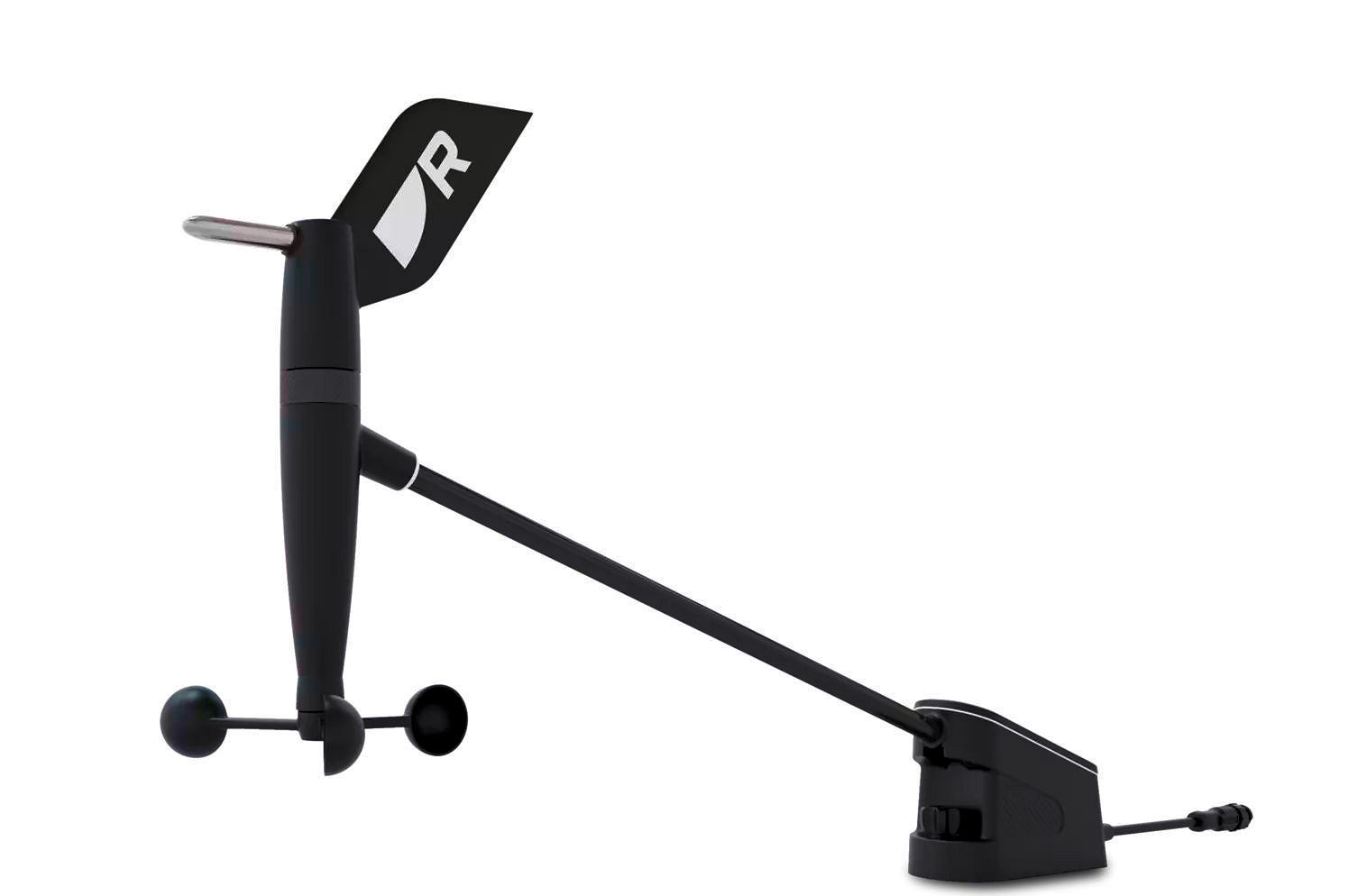
The RSW Series Wind Sensors
With sailing instrument experience spanning over 40 years, the RSW Wind sensors and Smart Wind Technology is the culmination of Raymarine’s deep knowledge of precision wind measurement combined with 3D motion sensor. The result is a self-calibrating, AHRS-enhanced wind sensor that adapts to its environment to deliver precision wind data, including ultra-accurate true wind calculations.
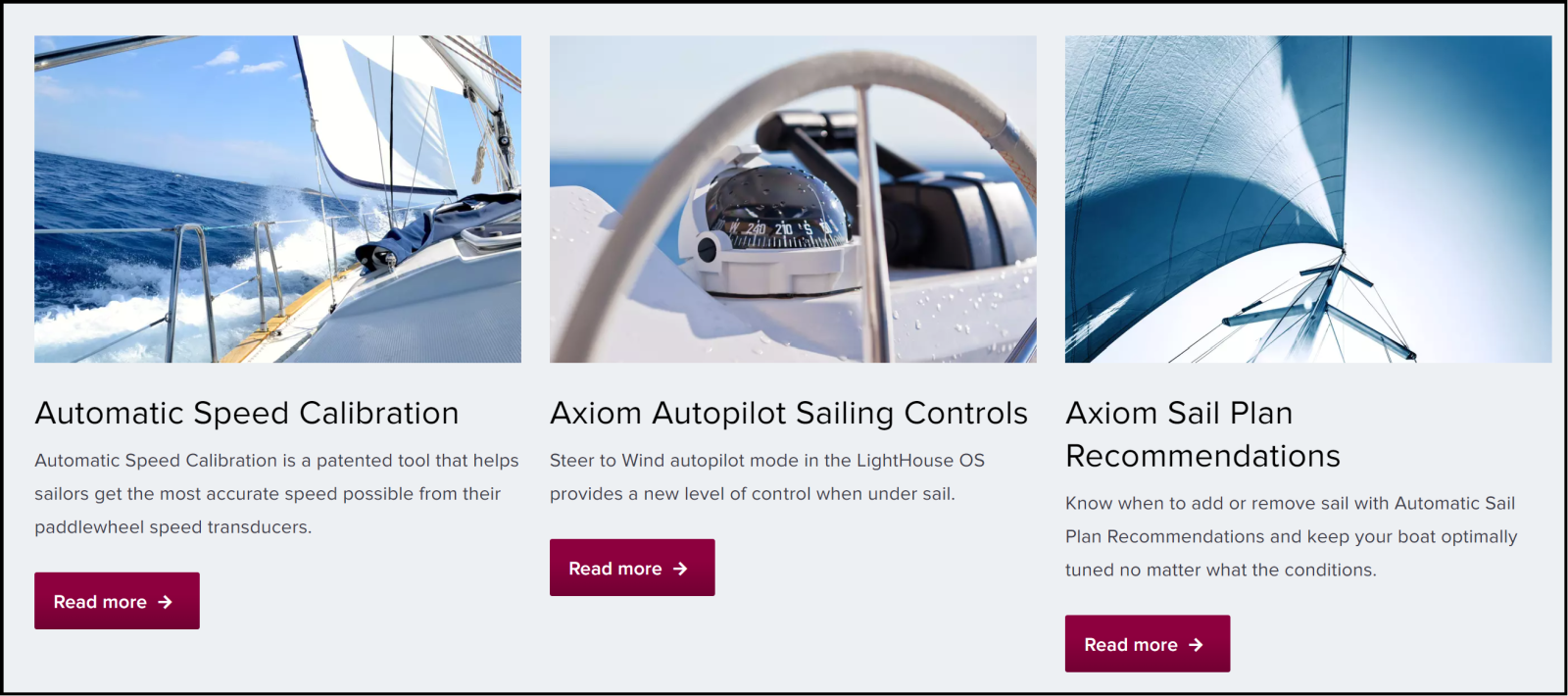
Axiom with LightHouse OS Performance Sailing
Axiom with LightHouse 4.5 is the sailor’s chartplotter. Simply select Sailing Performance from the LightHouse startup, and Axiom is transformed into a tactical sailing chartplotter with easy-to-use tools for layline overlays, preloaded performance polars, and complete remote control and integration with Alpha Series instruments and RSW Series wind sensors.
Raymarine’s new Performance Sailing products will be on display at the Newport International Boat Show in Newport Rhode Island and Cannes Yachting Festival in Cannes France. Whether you are a weekend club racer or an offshore solo adventurist, we invite you to experience the world’s most powerful and intuitive sailing decision support solution available on the market.
For more information on Raymarine and its full line of marine products, visit www.raymarine.com.

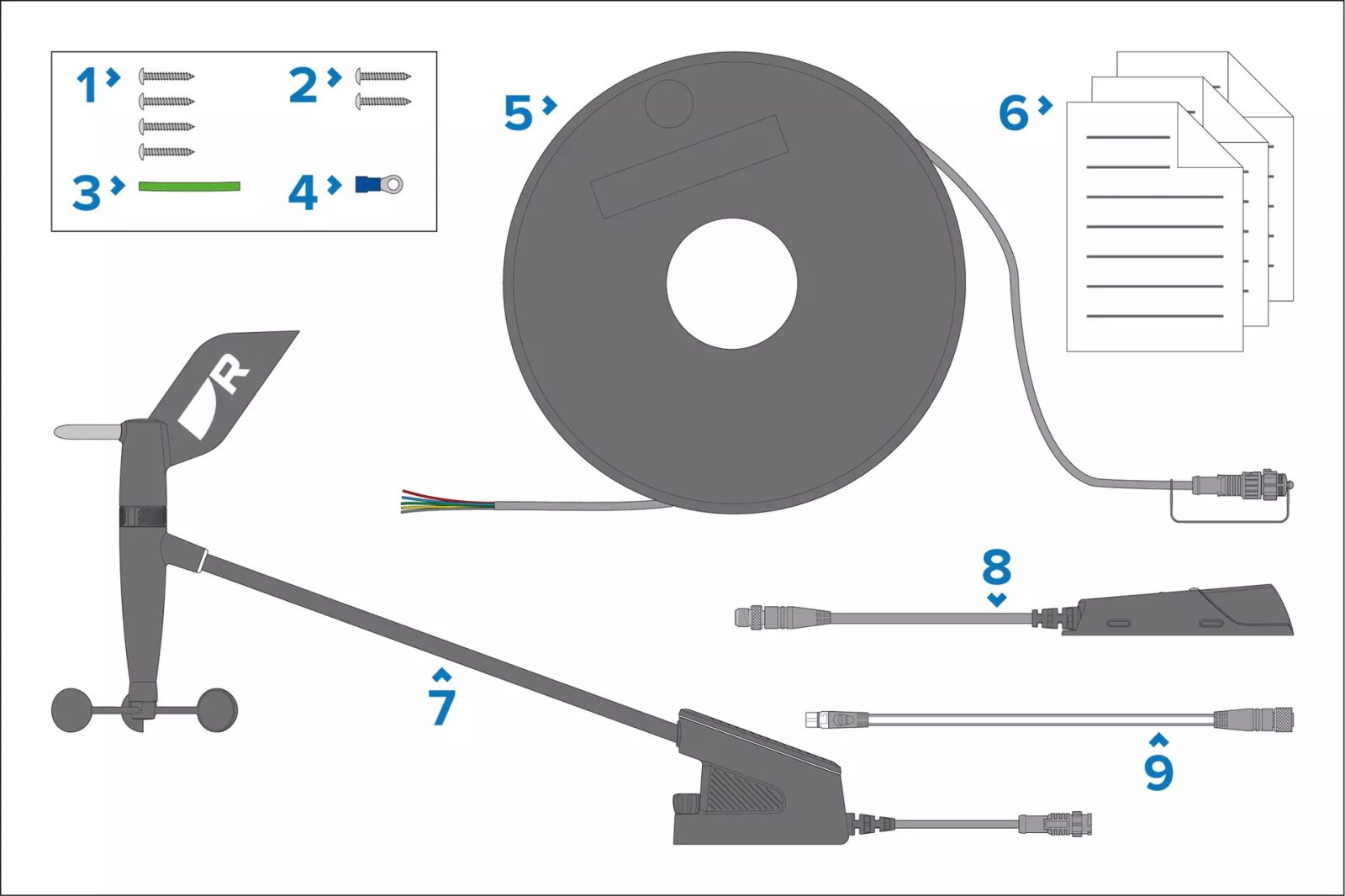
Panbo publishes select press releases as a service to readers and the marine electronics industry. The release contents do not reflect the opinion of the editors and are not fact checked by the editors


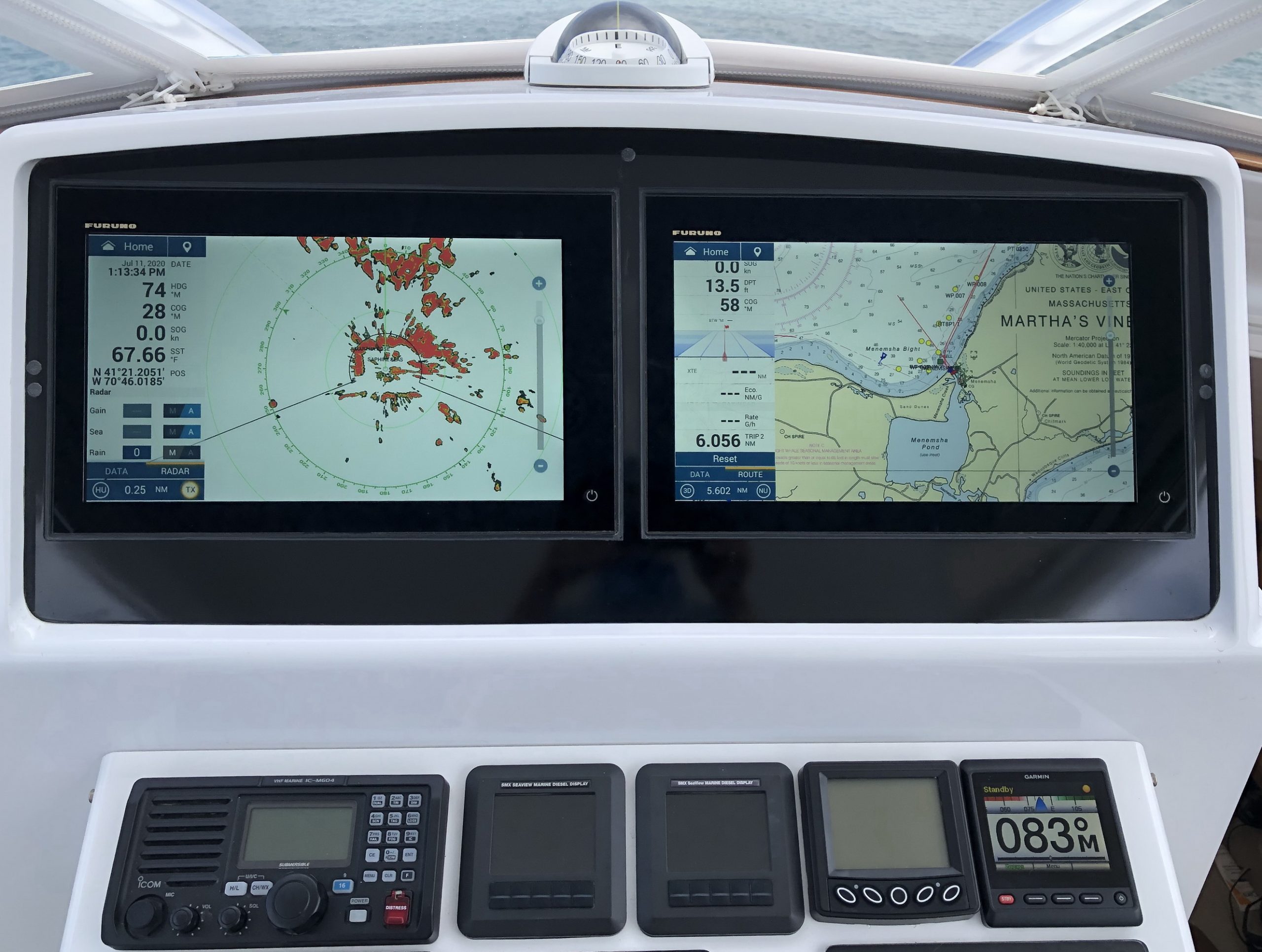










This press release seems like the tip of an iceberg in terms of interesting new performance sailing tech that Raymarine is rolling out. Check out more detail here:
https://www.raymarine.com/en-us/sailing
Some cabling details I noticed, and why I posted the two bottom images:
* The new Alpha displays connect to an Axiom system via RayNet (Ethernet) but the special cables also contain 12-24v power wires. And the displays can be daisy-chained (which is unfortunately not allowed in NMEA 2000).
* The RSW (Raymarine Smart Wind) Wired model also uses a special cable for power and data, which goes down the mast to a “Smart wind wired gateway” connection to NMEA 2000 (with either DeviceNet or STng connector). I like this because there’s no need to run an N2K network all the way up a mast and that can be a source of problems. Also, it seems obvious that there will eventually be a RSW Wireless model with a “Smart wind wireless gateway”.
On your second bullet… I recently asked James McGowan from Raymarine about the connection on the Smart Wind Wired Gateway. He reports it is a NMEA 2000 DeviceNet connector. He also said he expects future new devices from Raymarine to also have DeviceNet connectors.
That seemed to be the direction Raymarine was heading when the Axioms shipped with DeviceNet. But then a few new products, including all of the Yacht Sense family, shipped with SeaTalk NG. That confused me and I wasn’t sure where Raymarine was heading. But, it appears DeviceNet will carry the day from here forward.
-Ben S.
I wonder if they now have a rotating mast wind solution.
Purportedly yes: “Smart Wind technology also compatible with rotating masts.” Building an “Integrated 3D motion sensor (AHRS technology)” right into the wind sensor supposedly results in accurate compensation for all sorts of masthead motion although it seems possible that a rotation sensor at the mast step may be involved too. I’m sure that Ray will be revealing more soon, but for now there’s this:
https://www.raymarine.com/en-us/our-products/marine-instruments/smart-wind
That’s great news for owners of most Corsair & Farrier Trimarans. Hopefully they include a 9-axis MEMS sensor in the base. They should be able to do compass differential with the hull and not even need a separate sensor.
That’s at least what my dealer told me – no need for a hull compass. This would indeed be very nice for small Tris (like our Dragonfly 25 Sport). He said a wireless version will follow by summer/autumn and I will be waiting for that as I fear the constant movment of my rotating mast will harm the cable. Any comments on that problem?
Tim, A wire’s suitability to repeated motion has to do with its construction. Wires made of more, but finer strands will handle more motion than wires with fewer strands. This is why solid wire isn’t allowed on boats. Just think of the wire used on industrial robots in motion 24/7. Raymarine seems to use high quality wire and so long as it doesn’t come under tension when the mast is rotated, it should be fine. It’s also probably good practice to secure your mast when not sailing. Plenty of other things might wear or chafe under constant motion.
Looks like they have copied the industrial design almost exactly from B&G!
Compass for mast rotation… great in the lab (maybe) fraught with problems IRL. Measure the mast position at the base of the mast is what is required. Get 1/10th of a degree accuracy. Some boat builders make an accommodation for a sensor with a cordage connection to a sheave on the mastbase. Good thinking.
I thought RM was using a compass for their Tacktic mast rotation sensor. OpenWind uses this approach as well.
Running a thin tensioned line from the deck to the masthead with the wind instument on a rotating base is a clever idea. I’ll have to give that some thought.
I hope someone comes up with a mast rotation sensor that scales down to under-10m boats with under-10m budgets. Current solutions are expensive and too bulky for smaller boats. I’ve considered a throttle cable led under-deck to a rudder rotation sensor, but how best to use that to correct wind angle in software?
-Ryan
My B&G 508 wind sensor has apparently failed – I say apparently as a few year ago it seemed to die but then mysteriously recovered. The 508 doesn’t have a great reputation for reliability and is discontinued so I am looking at other options with reliability the top priority. Economy is also important but given the hassle and cost of replacing a masthead unit somewhat secondary. Our boat is a Cornish Cutter – a Bermudan rigged Cornish Crabber24 ( 29’ LOA with the bowsprit)).
No racing! However I would like to have wind for my Raymarine EV100 tillerpilot. Other instruments are a couple of Triton 1s and a Vulcan 7.
Should I stick with B&G and get a current wind sensor, either wired or wireless. Or should I go for an RSW?
Or some other option? Any recommendations would be much appreciated.
I will definitely not be going up the mast to make the replacement so I either have to hire someone or drop the mast and restep – it is deck stepped and I have done this before with the help of a friend but I was younger and fitter.
Not an urgent project – I have the winter to sort this out.
I definitely like the idea of not having the N2k terminator at the top of the mast – it took me a while to realise that the failed wind sensor was the culprit for the whole network being out.
Well, Patrick, the B&G WS310 seems like a good possibility as the N2K interface is kept below deck and your existing B&G displays may offer some configuration if needed:
https://panbo.com/new-bg-ws300-wired-wireless-nmea-2000-wind-sensors-no-n2k-mast-cable-needed/
A bit over a year from the original post, and it looks like you can now finally buy the Raymarine smart wind sensor.
I believe there’s a box that goes at the base of your mast, or lower which attaches to your N2K backbone. No need for the N2K to go up the mast.
I’m looking forward to hearing about reviews.
If you want reliable, check out the Airmar ultrasonic sensors. No moving parts, but not as accurate.
Thanks for your quick response Ben!
Of course the base price for the WS310 is just be sensor -add about $150 for the cable and interface.
Similar deal with the WS320. I must say wireless is appealing! Once you get N2k hooked to the network the Raymarine RSW and B&G offerings are pretty close in price and Raymarine claims the RSW needs no calibration and is pretty much display agnostic ( as long as you don’t have a rotating mast – not an issue with a Cornish Crabber!
One thing that might sway me to B&G is the full WS320 wind pack with a Triton2 – I have an unused Triton 1 I could part with to defray a little of the cost and I believe thr Triton 2 displays AIS data.
Who knows, Raymarine might have a wireless RSW by the spring.